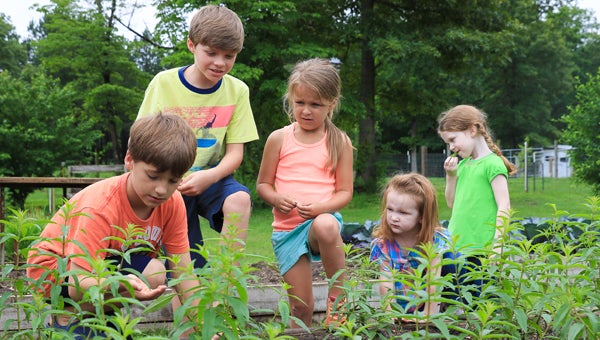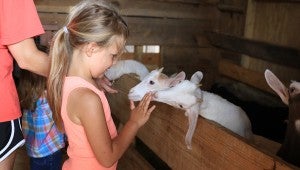A day on the farm: Students visit Stone Hollow Farmstead
Published 11:00 am Monday, June 1, 2015

Kids explore the raised bed garden at Stone Hollow Farmstead during a visit and tour on May 29. (Special to the Reporter / Dawn Harrison)
By MOLLY DAVIDSON / Staff Writer
HARPERSVILLE—Tucked away off miles of dirt road sits Stone Hollow Farmstead. The more than 80-acre expanse is a working sustainable farm and creamery, and home to goats, cows, horses, chickens and ducks.

Stone Hollow Farmstead is home to chickens, ducks, horses and goats. Kids got to visit the baby goats on May 29 tour. (Special to the Reporter / Dawn Harrison)
On May 29, the farm opened its gates to a group of local homeschool children and their families, giving them a peek behind the scenes of a working farm.
“Mainly what we’re noted for right now is the goat cheese,” guide Barbara Grubbs said to the children. “Have you ever had a Steel City popsicle? The caramel popsicle, that’s our caramel.”
Stone Hollow Farm is home to about 150 free-range goats that produce more than 50 gallons of milk every day. Milk from the goats is pasteurized, then turned into cheese over a three-day process.
The children were given a tour of the creamery, where the milk is turned into cheese, then were taken to visit the farm’s more than 200 chickens and ducks. Children helped gather a few of the hundreds of eggs the chickens and ducks lay each day at the farm.
As an Animal Welfare Advisory approve farm, all animals at Stone Hollow Farm are cage-free and free-range.
“We put the welfare of our animals first,” guide Barbara Treadway explained. “They are never caged and they are allowed to roam freely on open pasture.”
The free living conditions create healthier chickens, ducks and goats, and as a result, healthier eggs and milk, Treadway said.
The children were also given a tour of the farm’s raised bed garden, which grows the organic herbs and ingredients used to flavor the nine varieties of Stone Hollow Farmstead’s famous goat cheese.
“Everything we do here is non-GMO and organic,” Treadway said.
At the end of the tour, the children got to taste the end results of work at the farm, enjoying a lunch of organic chicken salad sandwiches made with Stone Hollow Farmstead’s duck egg aioli, apples dipped in cajeta, made with the farm’s caramel, and verbena lemonade.
“It’s all organic, all healthy food,” Treadway said. “They eat lunch with things we’ve gathered on the farm, they can start tying all those things together.”









